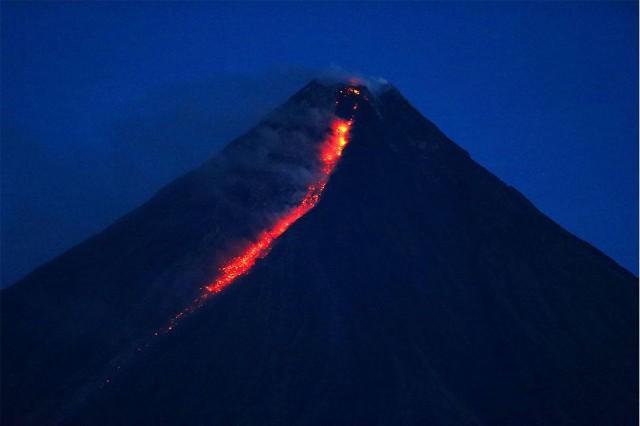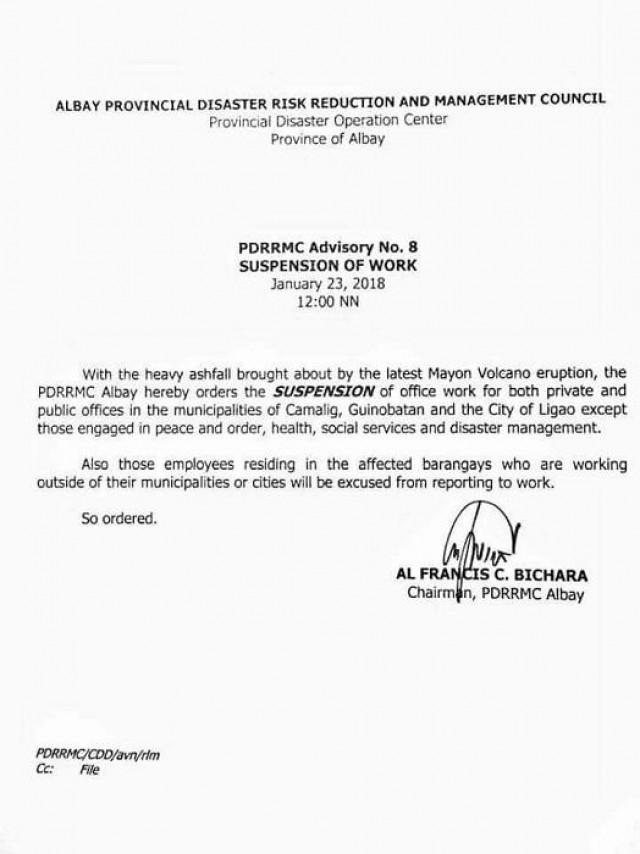So what exactly is an eruption?
Mount Mayon continues to spew ash and lava, with Philippine Institute of Volcanology and Seismology (PHIVOLCS) having raised the volcano’s status to Alert Level 4.
PHIVOLCS clarifies that the volcano has indeed erupted in the past week, although it is still being closely monitored for a possibility of a “hazardous eruption”.
Dr. Winchell Sevilla of the agency’s volcano monitoring department says that an eruption is considered hazardous if it causes damage to the surrounding communities.
He says that there are various parameters that they observe to determine this, such as a sustained eruption, incredibly high eruption columns, and thick dark ashfall. They also observe the rate of change of the area’s seismic level and ground deformation.
What is an eruption?
Eruptions occur when lava, gas, and other material are discharged from a volcano’s vent. Eruptions can either be effusive or explosive, both having been demonstrated recently by Mayon.
Effusive eruptions are sometimes called “quiet eruptions”, and they occur when the magma chamber overflows and lava spills from the crater. This is seen in a lot of Hawaiian volcanoes, and from recent photos and videos of lava flowing from Mayon.

Explosive eruptions happen when volcanoes eject lava, ash, and pyroclastic material into the air, as evidenced by the ash column extending to the sky from Mayon’s crater. These take place due to the release of built-up pressure inside the volcano.
According to the PHIVOLCS website, the volcanic activity from January 22 was classified as an explosive eruption — “phreatomagmatic” to be specific — that happens when hot magma inside the volcano comes into contact with cool meteoric waters in the crater.

Mount Mayon is classified as a “stratovolcano”. These are volcanoes characterized by more viscous lava that allows pressure to build up inside the crater, resulting in explosive eruptions. They are generally steep and conical-shaped due to the layers of hardened lava and ash deposits that have been ejected from the vent through the years.
Explosive eruptions are a characteristic of stratovolcanoes, although they also go through quiet lava flow episodes. A recent example was during the 2000 eruption event wherein Mayon exhibited lava flows that eventually transformed to a more explosive stage. PHIVOLCS has said, however, that Mayon’s recent eruption is seen to be “moderate[ly]-sized” and not anticipated to be as destructive as the deadly 1814 event.
Dr. Sevilla notes that a hazardous eruption is likely in the succeeding days — although it's completely possible that Mayon could just maintain its current level of activity.
PHIVOLCS is continuously monitoring Mayon’s restlessness. Alert Level 4 was raised over Mayon on January 22 after two explosion-type earthquakes corresponding to the vertical column eruptions were recorded, along with rockfall events and advancement of lava flow.
Classes have been suspended in Albay, and the provincial DRRM council has officially announced work suspensions in Camalig, Guinobatan and Ligao City due to the heavy ashfall.

— LA, GMA News




